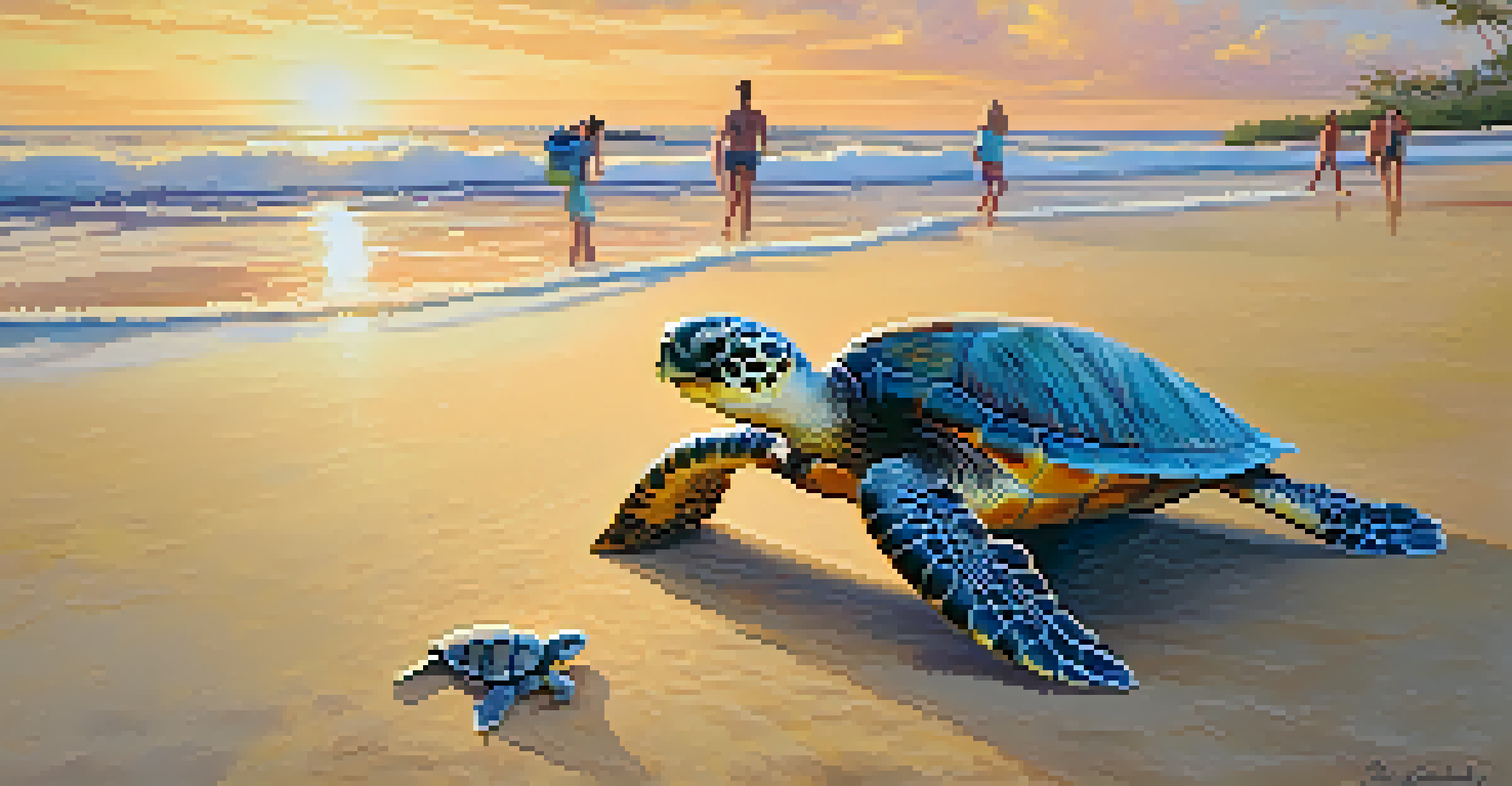Wildlife Conservation Trips: Protecting Endangered Species

Understanding Endangered Species and Their Importance
Endangered species are those at risk of extinction due to various factors, including habitat loss, poaching, and climate change. These species play crucial roles in their ecosystems, contributing to biodiversity and ecological balance. For instance, the extinction of a single species can have a ripple effect, disrupting food chains and harming other organisms.
The greatest threat to our planet is the belief that someone else will save it.
Conservation trips focus on protecting these vulnerable species by raising awareness and funding for their preservation. Participants gain firsthand experience in the field, learning about the challenges these creatures face. This type of engagement not only enriches participants’ knowledge but also fosters a deeper connection to the natural world.
By understanding the significance of endangered species, travelers can become passionate advocates for wildlife conservation. Their experiences can inspire others to take action, creating a larger movement dedicated to preserving our planet's biodiversity.
The Role of Wildlife Conservation Trips
Wildlife conservation trips offer participants the opportunity to contribute directly to conservation efforts. Travelers often engage in activities like habitat restoration, wildlife monitoring, and anti-poaching initiatives. These hands-on experiences provide invaluable support to local conservation organizations while helping participants develop practical skills.

In addition to direct involvement, these trips educate participants about the ecological and cultural significance of the regions they visit. Travelers often learn from local experts, gaining insights into the challenges faced by wildlife and the communities working to protect them. This knowledge not only enhances the travel experience but also empowers individuals to make more informed choices in their daily lives.
Importance of Endangered Species
Endangered species are vital for ecological balance, as their extinction can disrupt food chains and harm other organisms.
These trips also foster a sense of community among like-minded individuals who share a passion for conservation. Participants often leave with lasting friendships and a network of fellow advocates, which can amplify their impact long after the trip is over.
Choosing the Right Conservation Trip for You
Selecting a wildlife conservation trip that aligns with your interests and values is essential for a fulfilling experience. Consider factors such as the type of animals you want to work with, the specific conservation goals of the trip, and the level of physical activity involved. Some trips may focus on marine life, while others might emphasize terrestrial ecosystems.
In every walk with nature one receives far more than he seeks.
It's also important to research the organizations offering these trips. Look for reputable companies that prioritize ethical practices and sustainable tourism. Reviews from past participants can provide valuable insights into the trip's quality and the organization’s impact on local wildlife and communities.
Lastly, consider the duration and location of the trip. Whether it’s a weekend getaway or a month-long adventure, ensure it fits your schedule and allows you to immerse yourself fully in the conservation efforts.
Impact of Wildlife Conservation Trips on Local Communities
Wildlife conservation trips benefit not just endangered species, but also the local communities involved in conservation efforts. By providing economic support through tourism, these trips can help create sustainable livelihoods for local residents. This economic incentive encourages communities to engage in conservation rather than exploit natural resources.
Additionally, these trips often include educational components that empower local residents with knowledge about sustainable practices. Workshops on eco-friendly agriculture, wildlife tourism, and conservation strategies can help communities prioritize long-term environmental health over short-term gains.
Hands-On Conservation Experiences
Wildlife conservation trips provide participants with practical involvement in conservation efforts, enhancing their understanding and impact.
As travelers interact with locals, they create cultural exchanges that foster mutual understanding and respect. This relationship-building can lead to more collaborative conservation efforts, ensuring that both wildlife and communities thrive together.
Conservation Success Stories from Wildlife Trips
Many wildlife conservation trips have resulted in remarkable success stories that highlight the positive impact of these initiatives. For instance, participants in a sea turtle conservation program may witness firsthand the hatching of eggs they helped protect, leading to a resurgence in local turtle populations. These successes can be incredibly rewarding and motivating for travelers.
Another example can be seen in projects focused on big cats, where conservation trips have raised funds for anti-poaching patrols. These efforts have led to increased populations of species like tigers and leopards in protected areas, allowing travelers to observe these majestic animals in their natural habitat.
These success stories not only celebrate the achievements of conservation efforts but also inspire others to join the cause. When travelers share their experiences and the positive outcomes of their trips, they contribute to a growing movement dedicated to wildlife preservation.
How to Make a Lasting Impact After Your Trip
After returning from a wildlife conservation trip, it’s essential to continue supporting the cause. One way to do this is by sharing your experiences through social media, blogs, or community talks. By raising awareness about the importance of wildlife conservation, you can inspire others to engage and participate in similar efforts.
Another meaningful way to make an impact is by donating to or volunteering with local conservation organizations. Many of these groups rely on ongoing support to fund their projects and initiatives. Your contributions can directly benefit the projects you participated in, ensuring that their vital work continues.
Supporting Local Communities
Conservation trips not only aid wildlife but also empower local communities by providing economic support and promoting sustainable practices.
Lastly, consider adopting sustainable practices in your daily life. Simple changes, such as reducing plastic use, supporting ethical brands, or advocating for conservation policies, can create a ripple effect that contributes to broader environmental protection.
The Future of Wildlife Conservation Travel
As awareness of environmental issues grows, the future of wildlife conservation travel looks promising. More travelers are seeking authentic experiences that allow them to make a positive impact on the planet. This shift in mindset is encouraging organizations to develop innovative programs that combine travel with meaningful conservation work.
The integration of technology into conservation efforts is also on the rise. Virtual reality experiences, online workshops, and citizen science projects are making it easier for people to engage with wildlife conservation, even from their homes. This expanded accessibility opens the door for more individuals to participate in protecting endangered species.

Ultimately, the future of wildlife conservation trips relies on our collective commitment to preserving the planet's biodiversity. By continuing to prioritize responsible travel and supporting conservation initiatives, we can create a sustainable future for both wildlife and humanity.